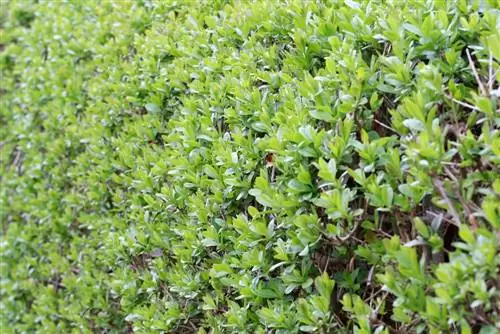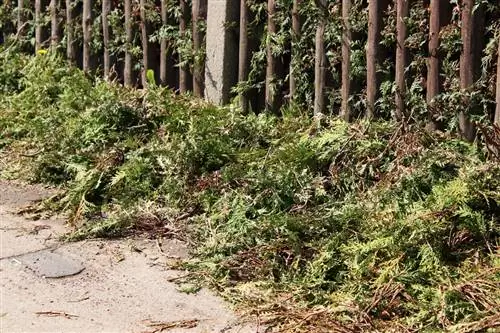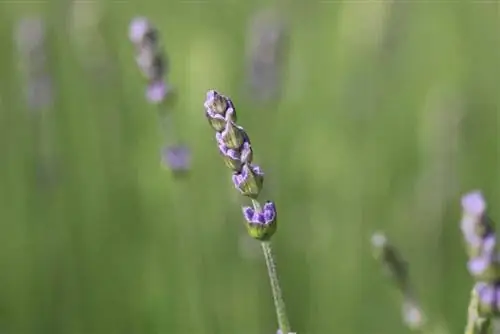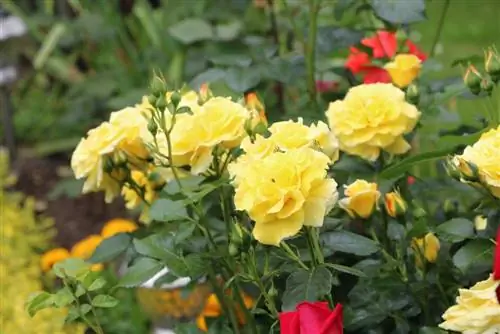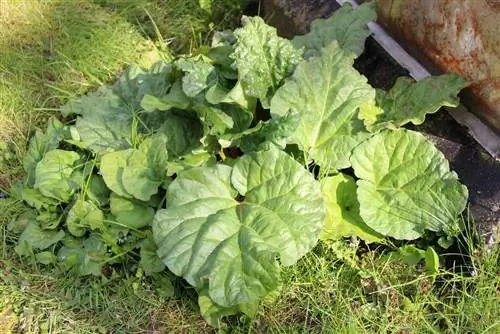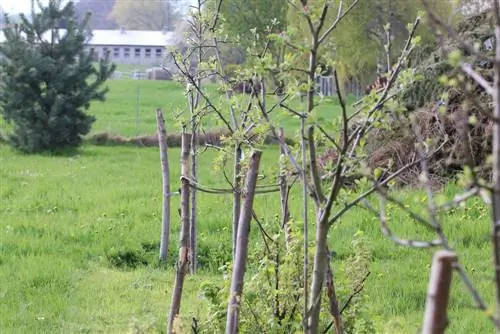- Author admin [email protected].
- Public 2023-12-17 03:39.
- Last modified 2025-01-24 12:45.
A privet hedge offers animals a habitat and people protection from unwanted looks; it can provide shade and reduce wind. But although the plant is easy to care for and practical in many ways, cutting back is extremely important. When is the best time to cut the privet and what should you pay attention to? We'll reveal it here.
Hygiene and cutting tools
Before the cutting can take place, the right cutting tool must first be selected. Dull scissors or the wrong utensils can cause the cut surfaces to fray and thereby form entry points for parasites and pathogens. It is therefore important to consider the following factors:
- choose sharp scissors and cutting tools or sharpen them before cutting
- Clean cutting tools thoroughly before and after use
- Choose scissors adapted to the thickness of the branches
Suitable for cutting back the privet hedge include:
- manual and electric hedge trimmers
- Pruning Shears
- Garden shears or rose shears
- Ratchet Shears
The use of electric hedge trimmers or cordless hedge trimmers is recommended, especially for larger hedges. They can be worked on quickly and a good result can be achieved with relatively little effort.
Preparing the hedge
In addition to choosing the right tool for cutting back, preparation also includes identifying the path of the cut. Even if you have a good sense of proportion, you can quickly cut the hedge crookedly and crookedly when cutting the hedge, which can significantly affect its appearance. An orientation helps to achieve or maintain the desired shape.
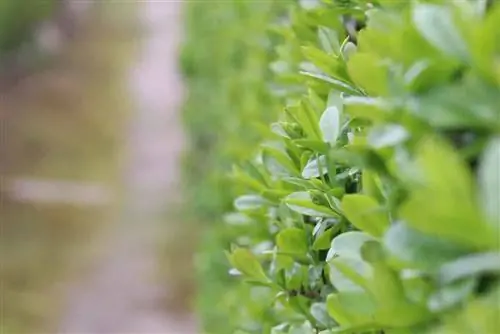
It doesn't take a lot of effort, the following steps are enough:
- Poles or slats are placed in the ground at the beginning and end of the hedge. They should be higher than the privet and have a stable base.
- To limit the height, a thread or rope is now stretched between the rods. It should not sag, but should form a straight line.
- If the height of the hedge is cut, sticks and thread can be used to provide orientation on the sides. This means that a straight cut can also be made in front of and behind the corner.
Frequency
Aside from preparation and the right cutting tools, the frequency of cutting is also crucial. The fast-growing privet should be trimmed two to three times a year so that it grows densely and is kept he althy. The shape can also be maintained more easily and better by cutting back frequently.
Especially with young plants, it is important that a blend is made three times a year. Otherwise, the plant will shoot up, but the lower areas can quickly become bare or at least appear very light. Regular cutting also gives the plant impulses to sprout new plants and branch out more.
For older plants, however, it may be sufficient to prune twice per season. As long as the measure is carried out regularly and at the right time and is not done too timidly.
Time
When the cutting takes place determines the he alth of the plant. The privet can be done between February and October. However, the plant should not be trimmed during late autumn and winter. Whether the cutting takes place in spring, summer or early autumn - it is important that the time is chosen correctly. In any case, the following should be avoided:
- Bright sun as it can cause burns
- humid days and rain, as the cut surfaces then only dry and close with a delay
- Frost as it can cause damage
Optimal is an overcast but dry day or late afternoon. This avoids the risk of burns and allows the cut surfaces to close and dry overnight.
Radical pruning
A radical pruning or radical pruning can be useful for both young plants and older plants in order to achieve the desired shape again and to stimulate new, denser shoots. The shoots are shortened by up to 50 percent - i.e. they lose half their length. This may not seem to make much sense at first, but it is often the only way to achieve denser foliage and the desired shape, especially with older and balding plants.
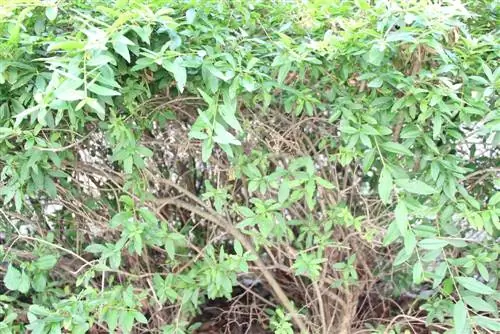
However, the radical cut may not be carried out between March 1st and September 30th. The reason for this can be found in the ecological balance and in the animal world. Since some bird species like to use the privet hedge as a breeding place, a radical cut could destroy nests with eggs or young birds or stress the birds so much that they neglect their young.
The correct time is after the privet sprouts - but before March 1st. The end of February is therefore ideal. A radical cut in autumn, i.e. after the 30th. September is also possible, but it costs the plant a lot of energy, which means that budding can be delayed and reduced.
care cut
A care cut is not nearly as radical as a rejuvenation cut.
It is important:
- to remove bare and damaged branches and shoots
- to bring shoots that are too long to the desired length
- very thick and crossing ones to be thinned out
The maintenance cut can be done between March 1st and September 30th. However, it is important that you do this carefully so as not to scare away any birds that may be breeding in the hedge. When the pruning is best carried out depends on the shoot. The first shoots occur in February or early spring. If a radical pruning has been carried out, the next pruning is usually not necessary until June or July. If there was no radical cutting, cutting can take place as early as May or June. From around August onwards, further shoots and buds will form. The latter develop into berries after flowering. If you want to harvest the berries or provide them as food for birds, you should do the last harvest of the year as early as possible.
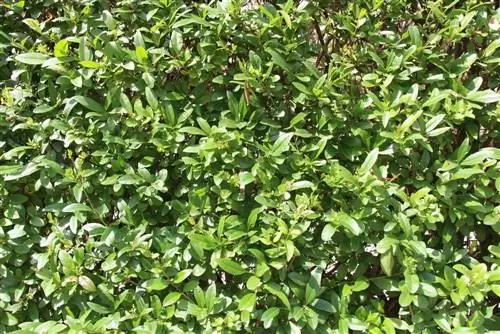
One way to do this is to radically prune the plant before March and to carry out a care pruning in early summer before new shoots and bud formation take place.
Caution: Toxic
The berries of the privet serve as food for birds, even in late autumn and winter. They are suitable for human consumption as liqueur or jam. However, they are poisonous when raw. Even small amounts are enough to seriously or even fatally poison small children, for example.
If small children or pets often play in the garden, you should either avoid the privet or avoid the berries. It makes sense to cut the plant before or during flowering. This prevents the formation of berries and reduces or completely prevents the risk of poisoning.
However, the toxins are not just in the privet berries. All other parts of the plant can also cause poisoning. It is therefore crucial to dispose of the green waste correctly and avoid direct contact with it. Gloves should therefore be part of the utensils when pruning.

